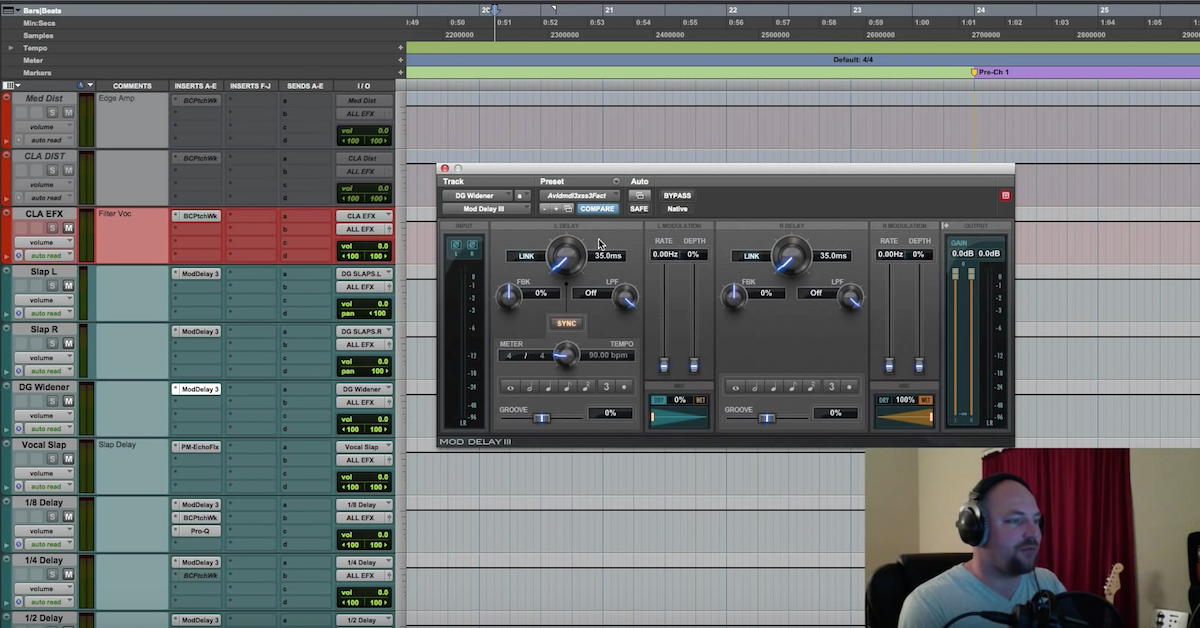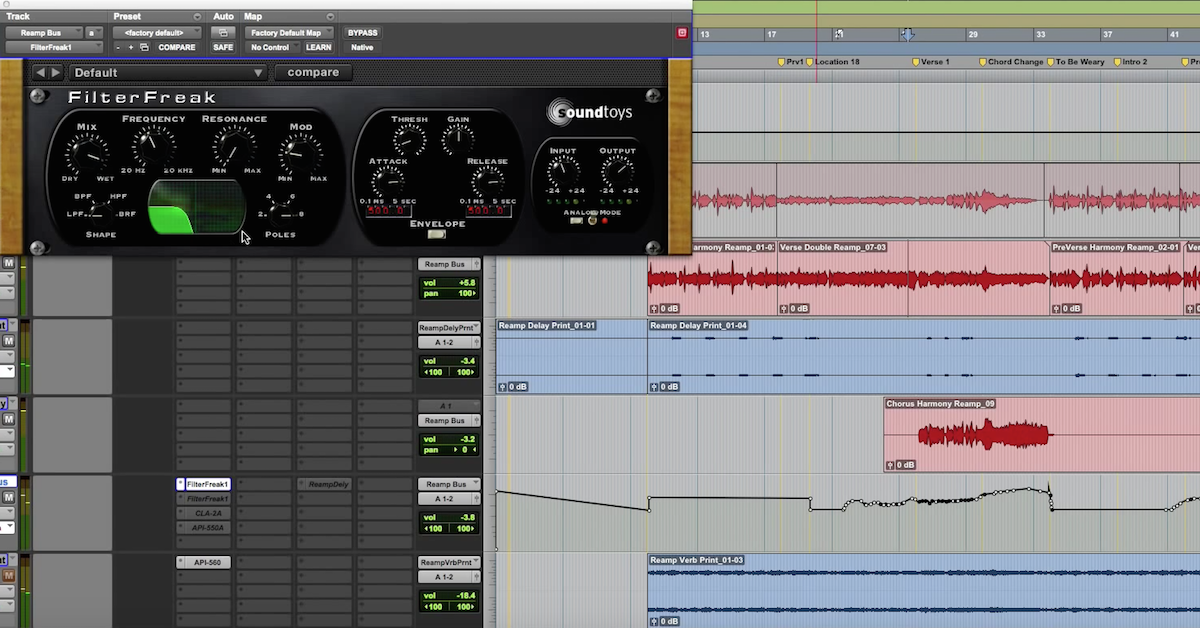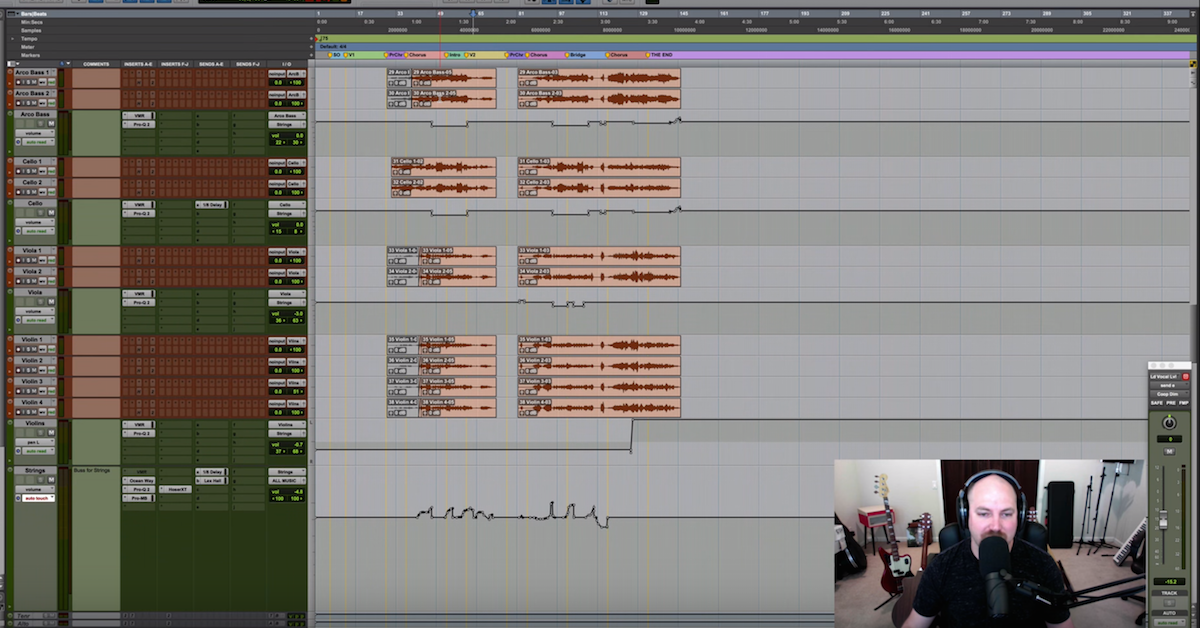A Better Way to Start a Mix
What does that mean? Stay tuned and find out.
If you’re anything like me, you started the mix from the beginning at a sparse intro at some point in your life, where you’ve had maybe just an acoustic guitar and a vocal in the beginning, or maybe it’s bass, drums, and keys, before all the other instruments come in, or maybe it’s something atmospheric and you create some really big, beautiful, luxurious sounds for this intro.
Well, by the time your first verse comes along, you’ve already eaten up a lot of space, and now you’re putting things on top of these luxurious intro sounds that you’ve established, and now by the time your chorus comes along, now you’re really running out of space. Now what do you do? Do you start carving things out, maybe trying to use an EQ to create space where there’s no space, and then by the time you get to your last chorus, if you had any space left at all, to shoehorn one more instrument in you’d be ecstatic, but it is just not there.
If this has ever happened to you, you’re not alone. There’s actually a lot of really great mixers that I know who often, routinely, dive into the most dense section of their song first, specifically because of this.
Thankfully, there’s no rule that says you have to start your mix at the beginning, and diving into your densest section first can be a very big boost to your mixes.
So the next mix that you do, I’m going to recommend that you don’t just start at the beginning. Try first diving into the most dense section of your song and start working there.
If you saw our quick mixing tips from last week, then you know I’m kind of an advocate for starting by bringing up your most essential instruments first. This might be a vocal, it might be a drum kit, and then bringing in your kind of next most important instruments.
You should always have an idea in mind of what the focal point of any section is, and you should try to bring in sounds in that order. One of the other things you’ll start to discover, the better and better you get at mixing, is that it’s not really about finding one fader position that works for the entire song.
It’s okay not to just start at your most dense section, but also to have slightly different mixes for each section.
This can be in fader settings, you can do fader rides, fader automation from section to section, but you might also even have different EQs on different instruments, section by section.
Now this kind of approach isn’t necessary for every single mix, but for really dense arrangements, and for really ambitious productions, it may be well within reason to kind of have one EQ setting for your kick in the chorus, and a different EQ setting for your kick in the verse, and that’s okay.
Maybe in the intro there’s a lot of space for a big, luxurious keyboard sound, but by the time you get to your last chorus, that keyboard sound kind of has to be a skeleton of itself to leave room for all of the other elements that have been introduced.
A great mix is really like a living, breathing organism, and a really great mix can kind of unfold like a story unfolds. You’re not really doing your best work if you try to find one static setting to keep everything at through the duration of the entire mix. Rather, it can be very, very wise to not start at the beginning and to instead, work in sections, from your most dense, kind of outward.
This can allow you to have a mix that continuously ramps up, and ramps up, and ramps up in intensity as it goes along, and maybe has little dips, and little peaks, and it’s a bit hard to do that by starting at the beginning and just working all the way through, but if you start at one of the most dense and majestic sections in your mix, make that really huge, and then kind of work backwards from there.
Often, that’s the way where you can kind of see deeper into this story, and help it unfold, once you know where it should go. It’s much easier to get there.
There’s a novelist I really like named John Irving, and he says every time he writes a novel, he always has his last sentence in mind before he even begins.
He says that once you know how a story ends, it’s just a matter of getting there, and the same thing can be true for your mixes. Once you know what the kind of big payoff is, your kind of big climax is in a mix, and every mix should have some kind of climax, once you know where that is, and how intense it’s going to be, and what the payoff is going to feel like, then it’s just a matter of making the entire mix and the entire song feed into that section.
Now, don’t take this too far, of course I’m not saying you should only have one interesting section, and that’s the focal point of the entire song, and everything else doesn’t matter. Obviously, that’s not what I’m saying.
But you should be conscious of the idea of there being kind of ebbs and flows in a mix, and there being distinctly different sections, and sometimes, you can accent that by having slightly different fader positions, slightly different kinds of EQ and effect settings for each section. That’s okay. And you don’t have to go crazy with this necessarily to start.
If you haven’t tried this mixing in sections approach yet, you can start in a fairly minimal way. Just start mixing your chorus, and then go back to the intro and see how things are, and adjust from there.
But as you get more and more advanced, you might start getting an urge to think to think of each section of a song as a different piece in a puzzle of the song.
Your settings don’t have to be wildly different from section to section, but if they are different, that’s okay, you’re probably doing something right. You can record automation if you have some control surface with moving faders, but you can also do this with just mousing around in your DAW.
It’s okay to loop a section and kind of go into Pro Tools, change your trim tool, and try different level settings for each section. Don’t be afraid to turn on automation in your plug-in. You could add a treble boost or a low end cut to an instrument in a dense section, and take that away in a more sparse section, where that instrument can kind of be fuller bodied.
Now this quick tip is just one element in a larger strategy for getting great mixes. If you want to blow through your mixing plateaus and really get to the next level is to develop a strategy of your own. This is one of the reasons I’m excited to announce a course we have planned for next month called “Mixing Breakthroughs,” and it’s all about developing a strategy that’s going to take you from being an okay mixer who kind of knows how this stuff works to a really great mixer.
This is a course with over two and a half hours of training. The strategies that you want to have in place to be able to mix really well, really fast with the minimum of fatigue, as well as the little fun tricks and tactics that go into that larger strategy that can kind of be little eureka moments.
I never really knew what I was doing with reverb before until now, and I get it! Or I never knew what I was doing with a compressor or parallel compression until now, and I get it!
So if you’ve been mixing for a little while and you feel like you’ve kind of plateaued in your skills, you’ve learned the basics, you know your way around a compressor, you know your way around an aux send, and you just want to figure out how do the real pros do it? How do they do it so quickly, so efficiently, and so well? Well, me and the other folks from Sonic Scoop are happy to help you out with that. Since 2009, we’ve been interviewing producers and engineers — great ones, big ones, Grammy winners, some of your favorites, about their craft, their process, their approach. I personally hosted moderated panels for the AES convention — my Platinum engineers panels, where we bring together a slew of some of my favorite producers and engineers and talk about their approach to mixing.
Personally, I’m also a total nerd for this stuff myself. I read countless books about mixing, probably any book you’ve ever heard about mixing, I’ve read.
But more importantly than that, I’ve done it for a long time too. I’ve spent the last fifteen years making a living doing audio. This is not to say I’m the greatest, I’m not, but I listen, I pay attention, and I’ve learned a lot by really opening my ears and asking people who are better than me about their strategies. What goes into a great mix?
And there’s as many different ways to mix as there are mixing engineers, but there are some common touch stones that I run into again and again. Some thread that seem to run through the approach of most great mixers.
As always, we’ll reveal a ton of these industry hidden secrets for free on SonicScoop.com, and I recommend you go to SonicScoop.com right now, subscribe to the mailing list if you haven’t, or subscribe here on YouTube, for all of the great, free stuff that we put out.
But if you want the best of the best, consolidated, in a kind of easy to swallow course based format, where we trim away all of the fat and share time tested, Platinum record making strategies with you in a way that’ll take your mixing skills from where you are now to where you want them to be, well I encourage you to check out our upcoming course on Mixing Breakthroughs.
At the premium levels of this course, you can even get personalized mix critiques and mix coaching.
So I encourage you, follow the link at the end of this video to find out more.
In the mean time, this has been Justin Colletti of Sonic Scoop at Joe Lambert Mastering. Thanks for hanging out with me, see you next time.





